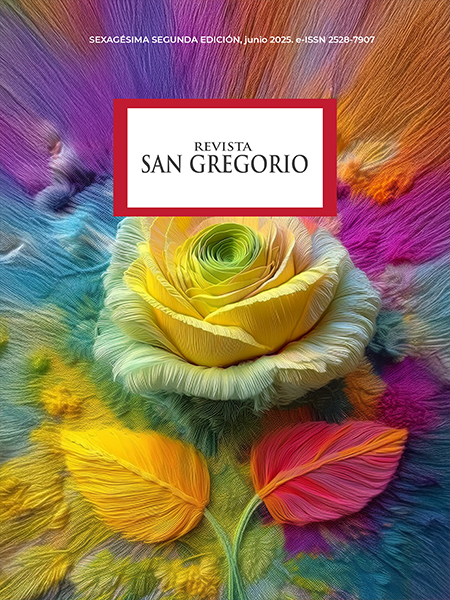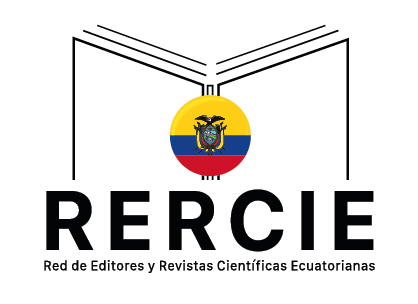Adaptación y validación del Cuestionario “Dental Subscale of the Children's Fear Survey Schedule” (CFSS-DS) en población ecuatoriana
DOI:
https://doi.org/10.36097/rsan.v1i62.3542Palabras clave:
Análisis factorial, tratamiento odontológico, validación de encuestas, odontología pediátrica, psicometríaResumen
El miedo y la ansiedad hacia el odontólogo son desafíos que complican el manejo clínico, especialmente en niños, y pueden interferir con el éxito del tratamiento odontológico. El objetivo de este estudio es validar el cuestionario "Dental Subscale of the Children´s Fear Survey Schedule" (CFSS-DS) para niños ecuatorianos entre 5 a 12 años atendidos en la Clínica de la Facultad de Odontología de la Universidad Central del Ecuador. Se desarrollóun estudio transversal observacional, que contó con 147 participantes. El cuestionario CFSS-DS, creado originalmente en inglés, fue traducido, adaptado y validado en el contexto ecuatoriano. El análisis se realizó con el software SPSS v.27; la consistencia interna se evaluó a través del Alfa de Cronbach (α > 0,75) y la estabilidad con el Coeficiente de Correlación Intraclase (ICC = 0,95). La validez convergente y divergente se analizó mediante la correlación de Spearman (rs=0,57) y la escala de Frankl respectivamente. El cuestionario propuesto (CFSS-DS-EC) demostró excelentes propiedades psicométricas, y se comprobó que es una herramienta confiable y válida para medir la ansiedad dental en niños ecuatorianos.
Descargas
Referencias
Arapostathis, K. N., Coolidge, T., Tofani, M. I., & Kotsanos, N. (2008). Reliability and validity of the Greek version of the Children's Fear Survey Schedule-Dental Subscale. International Journal of Paediatric Dentistry, 18(5), 374–379. https://doi.org/10.1111/j.1365-263X.2007.00894.x
Bajrić, E., Kobašlija, S., & Jurić, H. (2011). Reliability and validity of Dental Subscale of the Children's Fear Survey Schedule (CFSS-DS) in children in Bosnia and Herzegovina. Bosnian Journal of Basic Medical Sciences, 11(4), 214–218. https://doi.org/10.17305/bjbms.2011.2549
Barbério, G. S. (2017). Confiabilidade e validade do questionário Children’s Fear Survey Schedule-Dental Subscale para avaliação do medo e ansiedade ao tratamento odontológico em crianças [Tesis doctoral, Universidade de São Paulo]. Biblioteca Digital de Teses e Dissertações da USP. https://www.teses.usp.br/teses/disponiveis/25/25145/tde-28092017-183623/
Buchanan, H., & Niven, N. (2002). Validation of a Facial Image Scale to assess child dental anxiety. International Journal of Paediatric Dentistry, 12(1), 47–52. https://doi.org/10.1046/j.0960-7439.2001.00322.x
Cázares de León, F. C. (2019). Miedo al tratamiento odontológico en escolares mexicanos. Revista Cubana de Estomatología, 56(2), 1–13. http://scielo.sld.cu/scielo.php?pid=S0034-75072019000200004&script=sci_arttext&tlng=pt
Cademartori, M. G., Gastal, M. T., & Goettems, M. L. (2019). Validity of the Brazilian version of the Dental Subscale of Children’s Fear Survey Schedule. International Journal of Paediatric Dentistry, 29(6), 736–747. https://doi.org/10.1111/ipd.12543
Cuthbert, M. I., & Melamed, B. G. (1982). A screening device: children at risk for dental fears and management problems. ASDC Journal of Dentistry for Children, 49(6), 432–436. https://pubmed.ncbi.nlm.nih.gov/6960031/
El-Housseiny, A. A., & Farsi, N. M. (2014). Assessment for the Children's Fear Survey Schedule—Dental Subscale. Journal of Pediatric Dentistry, 29(1), 40–46. https://doi.org/10.17796/jcpd.39.1.ml4h38626g66p750
El-Housseiny, A. A., & Farsi, N. M. (2016). Reliability and validity of the Children's Fear Survey Schedule-Dental Subscale for Arabic-speaking children: A cross-sectional study. BMC Oral Health, 16. https://doi.org/10.1186/s12903-016-0205-0
Frankl, S. N., Shiere, F. R., & Fogels, H. R. (1962). Should the parent remain with the child in the dental operatory? Journal of Dentistry for Children, 29(2), 150–163. https://www.aapd.org/globalassets/media/publications/jdc-archives/asdc-sept-oct-1988-v55no5.pdf
Gao, S., Lu, J., Liu, L., & Yu, D. (2021). Prevalence and risk factors of children's dental anxiety in China: A longitudinal study. BMJ Open, 11(4), e043647. https://doi.org/10.1136/bmjopen-2020-043647
Jervøe-Storm, P.-M., Pasztor, G., Storm, T., & Frentzen, M. (2023). Evaluation of children’s anxiety level in relation to a dental visit/treatment and their parents’ dental fear. Journal of Clinical Medicine, 12(20), 6691. https://doi.org/10.3390/jcm12206691
Krikken, J. B., van Wijk, A. J., & ten Cate, J. M. (2013). Measuring dental fear using the CFSS-DS. Do children and parents agree? International Journal of Paediatric Dentistry, 23(2), 94–100. https://doi.org/10.1111/j.1365-263X.2012.01228.x
Ma, L. W. (2015). Reliability and validity of the Chinese version of the Children's Fear Survey Schedule-Dental Subscale. International Journal of Paediatric Dentistry, 25, 110-116. https://onlinelibrary.wiley.com/doi/10.1111/ipd.1210
Manterola, E. R. (2020). Fear in relation to dentistry using the Dental Fear Scale. Revista de la Facultad de Odontología, 35(81), 33–40. https://docs.bvsalud.org/biblioref/2021/05/1179196/art4_vol35num81.pdf
Paglia, L., Giuca, M. R., & Federighi, P. (2017). Reliability and validity of the Italian versions of the Children’s Fear Survey Schedule - Dental Subscale and the Modified Child Dental Anxiety Scale. European Journal of Paediatric Dentistry, 18(4), 305–312. https://doi.org/10.23804/ejpd.2017.18.04.08
Ramos, K. A. (2018). Fear and anxiety in children treated at the dental surgery of the University of Cartagena. Revista Odontológica Mexicana, 22(1), 8–14. https://www.medigraphic.com/pdfs/odon/uo-2018/uoi181b.pdf
Suzy, A. A., & Rahmi, A. N. (2015). Trans-adapted, reliability, and validity of children fear survey schedule-dental subscale in Bahasa Indonesia. Dental Journal (Majalah Kedokteran Gigi), 48(1), 1–6. https://doi.org/10.20473/j.djmkg.v48.i1.p1-6.
Descargas
Publicado
Número
Sección
Licencia
Derechos de autor 2025 Andrea Cristina Manzano Murillo, Marina Alejandra Cabrera Arias, Ángela Mercedes Murillo Almache

Esta obra está bajo una licencia internacional Creative Commons Atribución-NoComercial-SinDerivadas 4.0.















